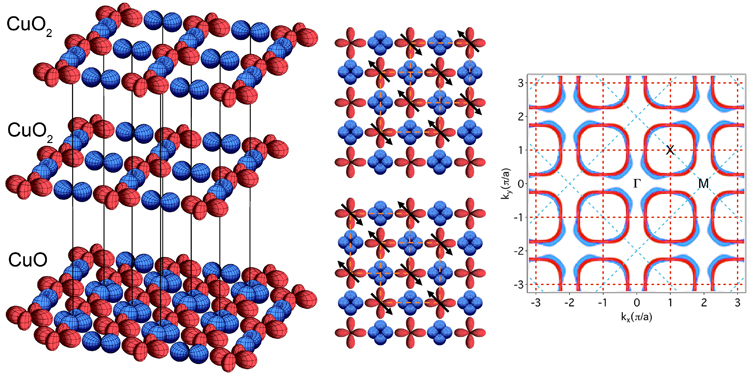
All superconducting cuprates share a common crystal structure, consisting of charge reservoirs stacked between layers of CuO2, the distinctive building blocks. An undoped version of these materials, including only copper and oxygen, is not available in nature. CuO2 does not exist as a self-standing compound, and CuO crystallizes in a low-symmetry monoclinic form, very different from the two-dimensional (2D) CuO2 planes.
By growing epitaxial films with the pulsed-laser deposition facility available on Beamline 7.0.1 (now moved to Beamline 7.0.2) researchers could stabilize a 2D version of CuO, which can be thought as composed of two CuO2 planes staggered and superposed. With in situ angle-resolved photoemission spectroscopy (ARPES), the group showed that such a tetragonal lattice electronically behaves much like two separate cuprate planes, with little cross talking. However, such a small intralayer coupling does imply important differences with respect to the physics of a CuO2 layer. Magnetically, it introduces an additional interaction between the antiferromagnetic order of each sublattice. Electronically, it modifies the band structure such that a doped version of CuO can be expected to show a two-gap version of d-wave superconductivity.

Work performed on Beamline 7.0.1.
Citation: S. Moser, L. Moreschini, H.-Y. Yang, D. Innocenti, F. Fuchs, N.H. Hansen, Y.J. Chang, K.S. Kim, A.L. Walter, A. Bostwick, E. Rotenberg, F. Mila, and M. Grioni, “Angle-Resolved Photoemission Spectroscopy of Tetragonal CuO: Evidence for Intralayer Coupling Between Cupratelike Sublattices,” Phys. Rev. Lett. 113, 187001 (2014).